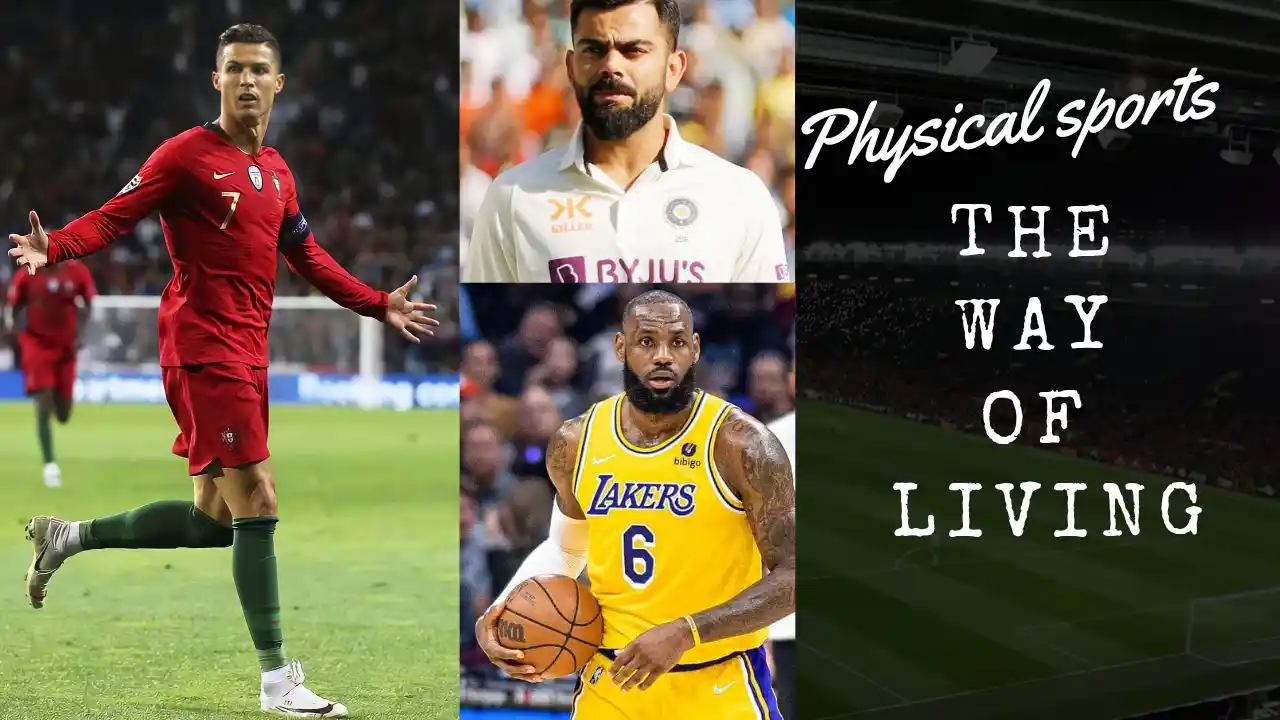Physical sports are competitive activities that involve physical exertion and skill, played individually or in teams. These games require participants to use their bodies and abilities to achieve specific goals or defeat their opponents. Physical sports emphasize athleticism, coordination, endurance, and strategy.
Physical sports include a variety of activities including team sports such as football (soccer), basketball, volleyball, cricket and rugby, as well as individual sports such as track and field, tennis, swimming and gymnastics. These games often have designated playing fields, courts, or tracks, with specific rules and regulations governing gameplay.
Engaging in physical sports offers many benefits, such as improving overall fitness, promoting teamwork and sportsmanship, increasing hand-eye coordination, and increasing mental focus and discipline. Additionally, physical sports provide opportunities for social interaction, stress relief, and a sense of accomplishment.
Whether played for leisure, recreation, or professionally, physical sports are an integral part of cultures around the world, bringing people together, promoting healthy lifestyles, and inspiring individuals to push their physical and mental limits.
Benefits from engaging in physical sports
1. Physical Fitness: Physical sports require participants to engage in physical activities that increase their overall fitness. Regular participation can improve cardiovascular health, strength, endurance, flexibility, and coordination. It helps individuals maintain a healthy weight and reduce the risk of various health conditions such as obesity, heart disease, and diabetes.
2. Mental Health: Physical sports have a positive effect on mental health. Engaging in sports helps release endorphins, “feel-good” hormones that boost mood and reduce stress, anxiety and depression. Regular physical activity has been shown to increase cognitive function, improve concentration and promote better sleep patterns.
3. Teamwork and Social Skills: Team participation in many physical sports promotes teamwork and cooperation. Working with teammates toward a common goal enhances communication, leadership, and interpersonal skills. It helps individuals develop a sense of harmony, learn to trust others and build strong relationships, leading to a supportive and social environment.
4. Discipline and Goal Setting: Physical sports require discipline and commitment. Regular practice, training programs, and adherence to rules and regulations develop discipline, time management, and organizational skills. Additionally, setting individual and team goals, working toward them, and experiencing the rewards of achievement instill a sense of purpose and motivation.
5. Self-Confidence and Self-Esteem: Physical sports provide opportunities for personal development and self-improvement. As individuals develop their skills, see progress, and overcome challenges, their self-confidence and self-esteem increase. Achieving success in sport, whether on an individual level or as part of a team, boosts self-confidence and provides a sense of achievement.
6. Life Skills Development: Being involved in physical sports teaches valuable life skills that extend beyond the sports arena. These include discipline, perseverance, resilience, sportsmanship, determination, and the ability to handle success and failure well. These qualities are transferable to other areas of life, such as education, career, and personal relationships.
7. Healthy Lifestyle Habits: Participation in physical sports often encourages individuals to adopt a healthy lifestyle. This includes making conscious choices about nutrition, maintaining regular exercise habits, and avoiding harmful behaviors such as smoking or excessive alcohol consumption. These healthy habits can have long-term benefits for overall well-being.
8. Long-term health benefits: Engaging in physical sports at an early age can lay the foundation for lifelong physical activity and good health. It reduces the risk of chronic diseases, such as osteoporosis, certain types of cancer, and age-related cognitive decline. Active people are more likely to maintain their physical abilities and independence as they age.
Top 10 physical sports
Note:- The ranking of the top 10 physical sports worldwide may vary depending on factors such as popularity, global participation, cultural significance, and viewership. here is a list of ten physical sports that are universally recognized and enjoyed:
1. Association Football (Soccer⚽): With a huge global following, football is undoubtedly one of the most popular and widely played sports. In this, two teams of eleven players compete to score a goal by throwing the ball into the opponent’s net.
2. Basketball: Basketball is a fast-paced team sport played on a rectangular court. It involves two teams of five players aiming to score points by shooting the ball into the opponent’s hoop. Basketball enjoys significant worldwide popularity as both a recreational activity and a professional sport.
3. Cricket: Cricket is especially popular in countries like India, England, Australia, and the West Indies. It is a bat and ball game played between two teams, and the objective is to score runs while dismissing the opposing players.
4. Tennis: Tennis is a singles or doubles game played on a court. Players use rackets to hit the ball over the net on the opponent’s court, aiming to score points. Tennis is enjoyed by millions around the world and has a significant professional circuit.
5. Athletics (Track and Field): Athletics covers a wide range of sporting events including running, jumping, and throwing disciplines. It is the cornerstone of the Olympic Games and has a rich history and universal appeal.
6. Rugby: Rugby is a contact team sport that originated in England. It aims to score points by carrying or kicking an oval-shaped ball into the opponent’s goal area. Rugby is popular in many countries, especially in parts of Europe, Oceania and Africa.
7. Boxing: Boxing is a combat sport in which two people engage in a contest of strength, skill and strategy. Participants use their fists to strike their opponents, following rules and regulations. Boxing has a rich history and has produced many legendary athletes.
8. Swimming: Swimming is a popular individual sport that involves propelling oneself through water using various strokes. It is not only a competitive sport but also an important life skill and recreational activity enjoyed by people of all ages around the world.
9. Martial arts (eg, karate, judo, taekwondo): Martial arts encompass a range of fighting practices originating from different cultures. These subjects emphasize physical and mental development, self-defense, and competitive sports.
10. Volleyball: Volleyball is a team sport with two teams on the court separated by a net. The objective is to score points by hitting the ball over the net into the opponent’s court while preventing it from touching your side’s court.










